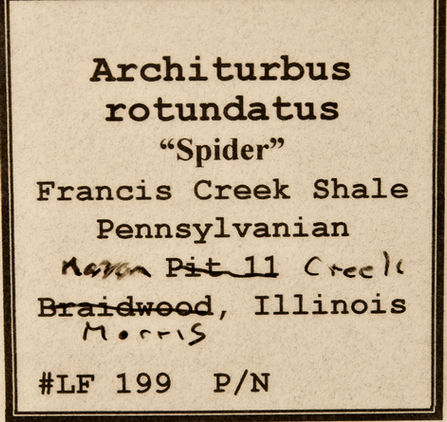MAZON CREEK COLLECTION
IMPORTANCE OF MAZON CREEK
Mazon Creek fossils is a generic name derived from the Mazon Creek, a tributary of the Illinois River where the concretions containing fossils were first found in the shale eroding from the creek’s banks.
The fossils are Upper Carboniferous in age and the fossils are found in the Francis Creek Shale deposit that is located right above a significant coal deposit. These fossil deposits are considered to be one of world’s great Lagerstätten. This location preserved many soft-bodied animals and plants rarely seen in the fossil record.


ABOUT MAZON CREEK
The Mazon Creek area contains another of the world’s great Konservat Laggerstätte. The fossils recovered in this area provide a glimpse into life in the Upper Carboniferous period approximately 300 million years ago preserving soft-bodied animals and plants.
MAZON CREEK LOCATIONS
The Mazon Creek area had many locations for collecting fossils. The map to the right shows the area in detail. Fossil collecting at the strip mines in Morris resulted in more terrestrial and fresh water fossils. The site known as Clam Flats or Chowder Flats was well known for the clams found in concretions. Some finds come from the banks of the Mazon Creek itself.
The most famous location is the marine area known as Pit 11. The famous Tully Monster comes from here. An old shaft mine at Braceville has a spoil hill that yields concretions. At one time there were spoil hills all over this area but most have been reclaimed or turned into sportsman clubs or cooling lakes for the nuclear power plants. Fossils were also found in central Illinois near Astoria.
MAZON CREEK COLLECTION
The Foundation collection contains fossils personally collected in the early 1970’s from Morris, Clam Flats, Pit 11 and other areas.
The Foundation also acquired some Mazon Creek fossils to fill out the collection in certain areas. The specimen pictures are a small sample of the collection. Scientific researchers who are interested in studying the collection, please contact us.




